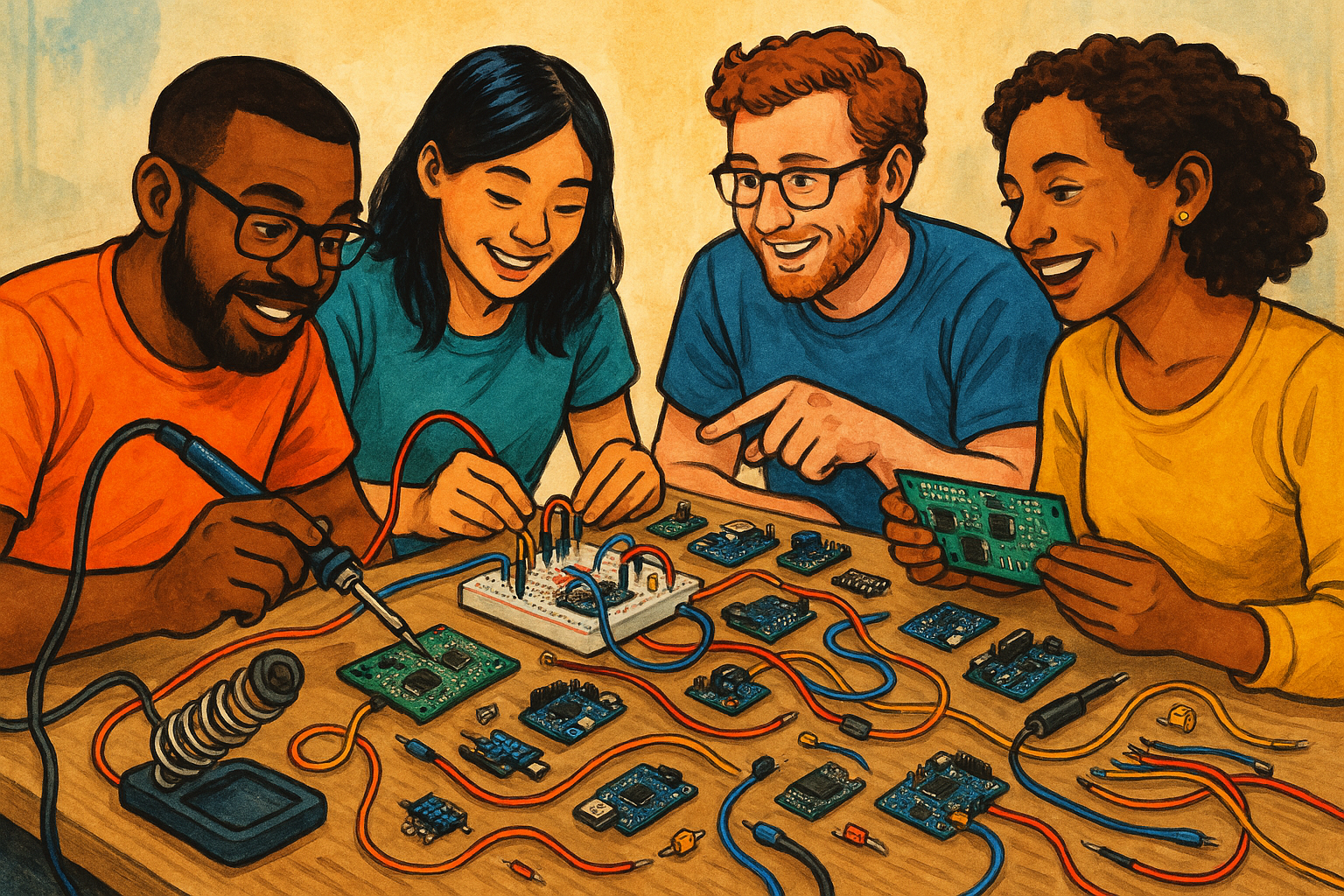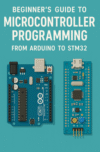When you press a button on your microwave, unlock your car, or even adjust your thermostat, there’s a silent worker behind the scenes: the microcontroller. It’s the tiny computer that doesn’t need recognition, yet it has shaped the modern world in ways most people don’t even realize. To really appreciate where we are with today’s STM32s and ESP32s, it’s worth taking a step back and tracing the story of how MCUs came to be.
The Spark in the 1970s
The idea of putting a whole computer on a single chip was radical back in the early 1970s. In 1971, Intel released the 4004, which is often remembered as the world’s first commercially available microprocessor. But soon after, engineers started asking: why not integrate memory and peripherals alongside the processor, so everything a small device might need could live on one piece of silicon?
In 1974, Texas Instruments introduced the TMS1000, widely recognized as the first true microcontroller. It packed CPU, RAM, ROM, and I/O all in a single chip. At the time, this was revolutionary—suddenly, everyday products like calculators, toys, and appliances could get “smarts” without the cost and size of an entire computer board.
The 1980s: MCUs Find Their Groove
By the 1980s, microcontrollers were popping up everywhere. Intel’s 8051, introduced in 1980, became one of the most influential MCUs in history. Its architecture was simple, robust, and easy to program. To this day, you can still find 8051 derivatives running inside legacy devices, proof of its longevity.
Another giant arrived from Japan: Renesas (then Hitachi and Mitsubishi) started pushing MCUs into consumer electronics. Around this time, microcontrollers weren’t just about controlling—manufacturers were figuring out how to optimize for power, size, and cost, setting the stage for embedded computing as we know it.
The 1990s: Competition Heats Up
The 90s were the golden age of diversification. Companies like Microchip Technology launched the PIC family, a simple yet powerful architecture that became a favorite among hobbyists and professionals alike. If you tinkered with electronics in the 90s or early 2000s, chances are you’ve programmed a PIC at least once.
Meanwhile, Atmel released the AVR line, with an instruction set that made coding in C much easier. These chips eventually gave rise to the Arduino revolution in the mid-2000s, democratizing embedded development for hobbyists, students, and makers.
The 2000s and 2010s: ARM Takes Over
By the 2000s, one name became synonymous with modern MCU design: ARM Cortex-M. Companies like STMicroelectronics, NXP, and Texas Instruments started adopting ARM’s architecture, giving us the STM32, Kinetis, and Tiva families. These weren’t just cheap chips for blinking LEDs—they had serious horsepower, real-time performance, and energy efficiency that made them perfect for IoT and industrial automation.
At the same time, Espressif shook things up with the ESP8266 and later the ESP32. For the first time, a dirt-cheap microcontroller came with Wi-Fi and Bluetooth built right in. This completely changed how makers and startups approached connected devices.
The 2020s: Smarter, Smaller, and More Open
Today, microcontrollers aren’t just “controllers” anymore—they’re edging into roles once reserved for microprocessors. Chips like ST’s STM32H7, Infineon’s AURIX, and NXP’s i.MX RT combine speed, memory, and real-time capabilities to handle tasks from robotics to automotive safety systems.
On the other end of the spectrum, Texas Instruments recently announced the MSPM0C1104, the smallest MCU ever at just 1.38 mm², proving that size still matters in wearables and medical applications.
And then there’s RISC-V, the open-source instruction set architecture that’s beginning to shake ARM’s dominance. Companies like SiFive and even established players like Renesas are experimenting with RISC-V MCUs, and the industry is watching closely.
Why It Matters
The history of the microcontroller is really the history of how intelligence crept into everyday objects. From calculators and washing machines to drones and smart cities, MCUs are the invisible glue holding the digital and physical worlds together.
What’s fascinating is that their evolution mirrors our own needs: first we wanted basic automation, then connectivity, now we want intelligence at the edge. And as power budgets shrink and demand for AI grows, tomorrow’s MCUs won’t just be the silent brains—they’ll be decision-makers in their own right.
If the past 50 years are any guide, the MCU’s story is far from over. In fact, it’s probably just getting started.



